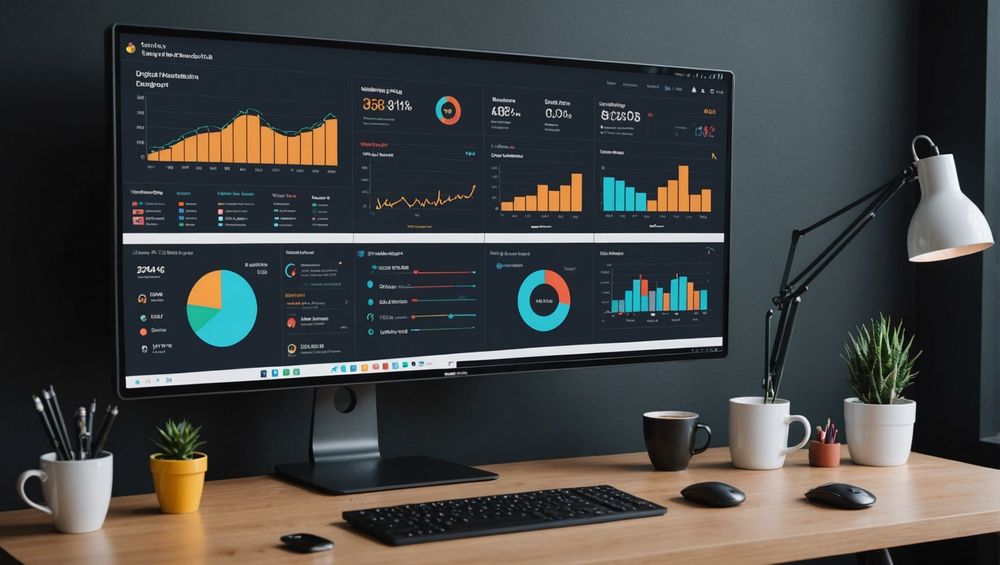Leveraging social media for B2B purposes can seem daunting, but effective strategies can bring remarkable results regardless of your industry. To help you navigate the complex landscape, we’ve compiled five social media strategies that have proven to work across various sectors.
1. Leverage LinkedIn for Networking and Thought Leadership

LinkedIn is the go-to platform for B2B marketing, offering unparalleled networking opportunities and the ability to establish your brand as an industry thought leader. To capitalize on this, start by optimizing your LinkedIn profile and company page to ensure they reflect your brand’s expertise.
Further accentuate your authority by publishing high-quality articles, whitepapers, and case studies directly on your profile. Additionally, join industry-specific LinkedIn groups to connect with potential clients, partners, and influencers. Engaging consistently in these groups can also help you gather invaluable insights into industry trends and challenges.
Finally, run targeted LinkedIn ads to reach specific job titles, industries, and companies to ensure your messages hit the right audience. Over time, an investment in LinkedIn strategies can generate quality leads and drive substantial growth.
2. Utilize Content Marketing on Multiple Platforms

Content is king, and in the B2B space, it plays a crucial role in educating and engaging your audience. Implementing a robust content marketing strategy helps establish your brand’s authority and maintain a steady stream of inbound leads.
Start by creating a content calendar that includes a mix of blog posts, infographics, videos, and webinars tailored to your target audience’s needs. Ensure that your content is SEO-optimized to increase organic search visibility.
Promote your content across multiple social media platforms, including LinkedIn, Twitter, and Facebook, to reach a broader audience. Engage with your followers by responding to comments and inquiries, further solidifying your brand’s presence.
Additionally, guest posting on reputable industry blogs can extend your reach and attract a more diverse audience to your content. Content syndication can also help in amplifying your messages across various platforms, bringing more eyes to your expertise.
3. Harness the Power of Social Listening

Social listening involves monitoring social media platforms for mentions of your brand, competitors, and industry keywords. This strategy provides critical insights into your audience’s preferences, pain points, and sentiments, enabling you to tailor your marketing efforts more effectively.
Implement social listening tools like Hootsuite, Sprout Social, or Brandwatch to track conversations and trends relevant to your industry. Use these insights to create highly targeted and responsive content, thus positioning your brand as proactive and in-touch with industry needs.
Moreover, social listening can help you identify influencers and thought leaders within your niche, facilitating partnerships that can amplify your reach. Addressing negative feedback discovered through social listening can also help mitigate potential PR issues and improve your brand’s reputation.
4. Run Targeted Ad Campaigns
Paid social media advertising is a powerful tool for B2B marketers, allowing precise targeting and measurable results. Unlike typical consumer-oriented campaigns, B2B ad campaigns should focus on generating quality leads rather than high volumes of traffic.
Platforms like LinkedIn, Facebook, and Twitter offer advanced targeting options based on job title, company size, industry, and even specific interests. Tailor your ad copy and creative to address the unique pain points and needs of your target audience.
Conduct A/B testing to refine your ads and optimize them for better performance continually. Monitor key metrics such as click-through rates (CTR), conversion rates, and cost-per-lead (CPL) to ensure your campaigns provide a good return on investment.
Finally, retargeting campaigns can help re-engage visitors who previously interacted with your website or content, pushing them further down the sales funnel.
5. Foster Community Building Through Engagement
Community building is essential for any B2B strategy, as it helps foster long-term relationships and brand loyalty. Engaging directly with your audience makes your brand more approachable and trustworthy.
Start by creating dedicated groups on LinkedIn or Facebook where your audience can discuss industry topics, share knowledge, and seek advice. Actively participate in these discussions, offering insights and solutions to demonstrate your expertise.
Host live Q&A sessions or webinars on platforms like LinkedIn Live and YouTube to engage with your audience in real-time. Such interactions build a sense of community and provide valuable opportunities to gather direct feedback from your audience.
Additionally, leverage user-generated content by encouraging your followers to share their experiences with your products or services. Highlight these contributions on your social media channels to show appreciation for your community’s support.
Conclusion
Implementing these B2B social media strategies can drive substantial growth and engagement for your business, regardless of the industry you’re in. By leveraging LinkedIn for networking, employing comprehensive content and social listening strategies, running targeted ad campaigns, and fostering community engagement, your B2B brand can build a strong online presence and generate quality leads. The key is consistency and a keen understanding of your audience’s needs. With these strategies in place, you’re well on your way to making social media an indispensable part of your B2B marketing mix.
FAQ
-
What is the best social media platform for B2B marketing?
LinkedIn is generally considered the best platform for B2B marketing due to its professional network and targeting options specific to job titles, industries, and companies.
-
How often should I post on social media for B2B marketing?
Consistency is crucial; aim to post at least 3-5 times per week. The key is to maintain regular engagement without overwhelming your audience.
-
What type of content is most effective for B2B social media?
High-quality content such as articles, whitepapers, case studies, infographics, and webinars are particularly effective for B2B audiences, as they provide valuable insights and solutions.
-
How do I measure the success of my B2B social media strategy?
Use metrics such as engagement rates, lead generation, click-through rates, conversion rates, and cost-per-lead to assess the performance and effectiveness of your campaigns.
-
Is social media advertising effective for B2B companies?
Yes, social media advertising can be highly effective for B2B companies. Platforms like LinkedIn, Facebook, and Twitter offer advanced targeting options that allow you to reach your ideal audience efficiently.









